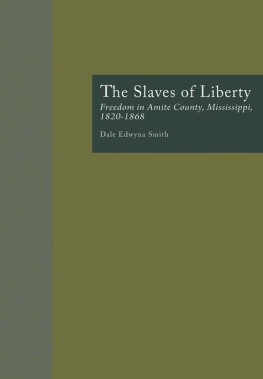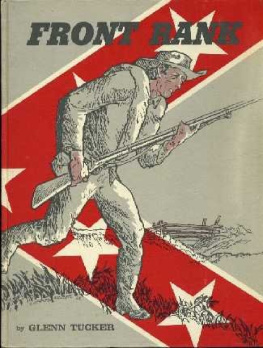
Gaston County, North Carolina, in the Civil War
Robert C. Carpenter

McFarland & Company, Inc., Publishers
Jefferson, North Carolina
LIBRARY OF CONGRESS CATALOGUING DATA ARE AVAILABLE
BRITISH LIBRARY CATALOGUING DATA ARE AVAILABLE
e-ISBN:978-1-4766-2330-6
2016 Robert C. Carpenter. All rights reserved
No part of this book may be reproduced or transmitted in any form or by any means, electronic or mechanical, including photocopying or recording, or by any information storage and retrieval system, without permission in writing from the publisher.
Front cover images 2016 iStock
McFarland & Company, Inc., Publishers
Box 611, Jefferson, North Carolina 28640
www.mcfarlandpub.com
In memory of my parents:
Claude and Georgie Carpenter,
who taught me Christian values,
a strong work ethic,
a belief in the American Dream,
and an appreciation for our heritage
Acknowledgments
Completion of a book of this magnitude cannot be undertaken without the assistance of many persons. I am deeply indebted to various people and institutions for assisting with this project. It is impossible to succeed in naming everyone individually, but I will attempt to do so.
The personnel at the North Carolina Department of Archives were especially helpful, as they provided me with numerous manuscripts and advice and answered my many questions about records available. The Southern Historical Collection at the University of North Carolina at Chapel Hill and the Rubenstein Library at Duke University provided me with necessary materials upon my visits and through email requests. The University of North Carolina at Charlottes library allowed me access to their newspaper microfilm collections. The Brevard Station Museum and Joyce Handsel were especially supportive of my research and aided significantly in locating sources. All were gracious and helpful hosts.
No depository was more helpful to me than the Lincoln County Historical Association. Jason Harpe allowed me access to their vast holdings, would troubleshoot with me on finding resources, and acted as an advisor in the project. Together we visited numerous persons with private papers, many of which ended up in the association archives to be saved for posterity.
A number of persons read the book and offered much helpful advice. To Ann Dellinger and Steve Huffstetler, your advice has made this a more effective book. Rachel Eickemeyer has been my conscience and my advisor. Her insightful advice, edits, and suggestions transformed my research into a readable and organized book. I thank her for taking so much of her personal time to assist me.
I advertised my project locally so that I could access private papers and collections. To the Gaston Gazette and Charlotte Observer and writers Wade Allen and Joe Depriest, I thank you for publicizing the project, which resulted in numerous contacts. Jason Harpe at LCHA, the Gaston Lincoln Genealogical Society, and the Gaston County Historical Society also spread the word. Numerous civic groups, like the Brevard Station Museum, Crouse Community History, Mt. Holly Historical Society, genealogical seminars, and DAR groups, allowed me to present my research and motivated persons to contact me with help and advice.
These efforts resulted in contacts to offer their papers, research, and advice to me: John Eddleman, Mike Sumner, Martha Parks, Darlene Levernier, Anita Roberts, Cheryl Mauney, George Moore, Violet Bumgardner, Martha Wilson, Morris Jenkins, Janice Bentley, Farrell Mauldin, Edward Phifer, Hugh Wilson, Daphne Friday, Margaret Hill, Mildred Newton, Lynda Hancock, Joyce Handsel and Brevard Station Museum, Gale Benfield, Fred and Mark Goodson, John and Wylma Monteith, Lucy Penegar, Gerald and Suzanne Deal, Jim Love, the Gaston County Museum of Art and History with Jeff Pruitt and Stephanie Elliott, Bill Beam, Mike Stroupe, Kitty Thornburg Heller, Elizabeth Carpenter, Wade Carpenter, Dr. Ed Anthony, Steve Huffstetler, Corinne Puett Gianitrapani, Anne Gometz and the Gaston County Library, Mike Peters, Greg Payseur, Danny Wilson, Mary Alice Carmichael, Rudolph Young, Rachel Eickemeyer, Daphine Peach, Charlie Rhyne, Kathy Gunter Sullivan, Len Clemmer, Bruce Cloninger, Gaston County Register of Deeds, Lincoln County Register of Deeds, Randy Thomason, and Lewis Carpenter. Even though this list is long, I fear that I have omitted someone and for that I apologize. This has been a community effort.
I wish to thank Melany Dawn Crouse for taking the pictures included in the book and for her technical expertise. Jason Harpe also assisted with scans, pictures, and computer assistance.
To Brenda Beard-Bostian, thank you for making my attempt at a Gaston County map to come alive as a legible and attractive map. Your professionalism and expertise is greatly appreciated.
To my children I especially want to express thanks for offering advice, helping with my computer questions and issues, and helping me finalize the researchCandace Hester and Michael and Marcus Carpenter. They, especially Candace, agreed to help their technology-deficient father and spent much time doing so.
To my wife, Sue, I thank her for once again allowing me to be consumed with a publication project of this magnitude, which too often took me to my computer and papers in the basement. She helped me transcribe the tax list on a vacation to Raleigh and Chapel Hill, managed my speaking engagements, and suffered through those long phone calls, often taking messages for me. Her support, assistance, and quiet suffering are greatly appreciated.
To Jason Harpe and others who assisted with the Index, I thank you for your hard work. Indexing is never easy, but your assistance has been invaluable.
Finally, even though I have labored to limit misspellings, mistakes, and omissions, I accept full responsibility for any which may have occurred. I hope you will enjoy this book!
Preface
All history is personal and local. Exploring an area, time period, or event requires the discovery of details and events, which correlate into a broad picture. With this perception, I have created Gaston County, North Carolina, in the Civil War to tell the story of a previously unstudied Piedmont area. This history is written in the words of county residents, inclusive of everyonepoliticians, soldiers, manufacturers, wives, mothers, slaves, Free Blacks, and children. Using their own words and deeds, all aspects of life have been analyzed and transported into a seamless journey of discovery.
This book is not a simple accounting of battles and generals, political leaders, and only the wealthy, but rather it tells the story of poor farmer, wife, child, Unionist, slave, and soldier. Efforts to solicit previously unpublished letters, diaries, and accounts not in public repositories have resulted in the inclusion of a significant amount of new historical documentation.
I combined these unpublished accounts with materials from archival collections, newspaper accounts, census records, letters to Governor Vance, public documents at the state and local levels, oral histories, and the 1863 tax list to create an inclusive journey into Gastons Civil War past. The journey represents the attitudes, struggles, and opinions of much of the state and the South. Over 90 percent of the sources utilized are contemporary, many outside archival collections, and the narrative and the tax list complement each other in providing descriptions of people, their life and conditions.
Next page





